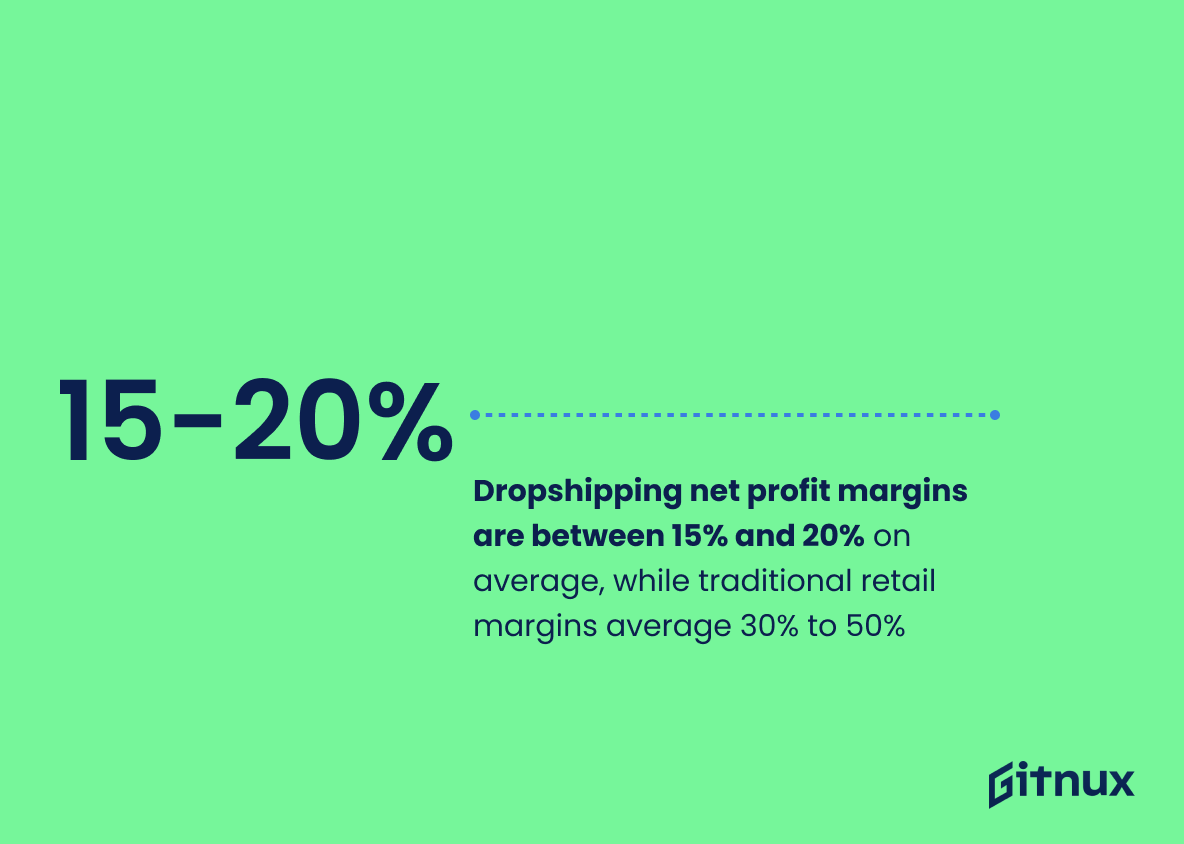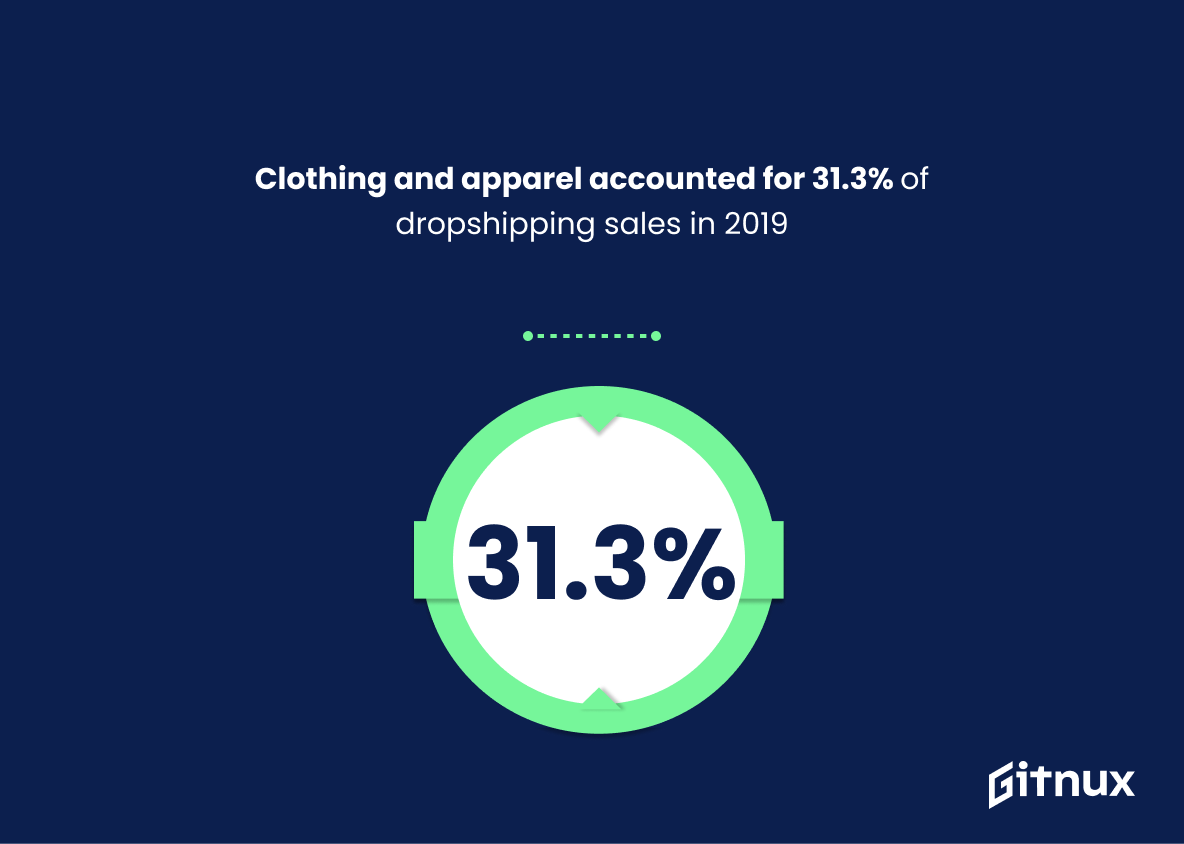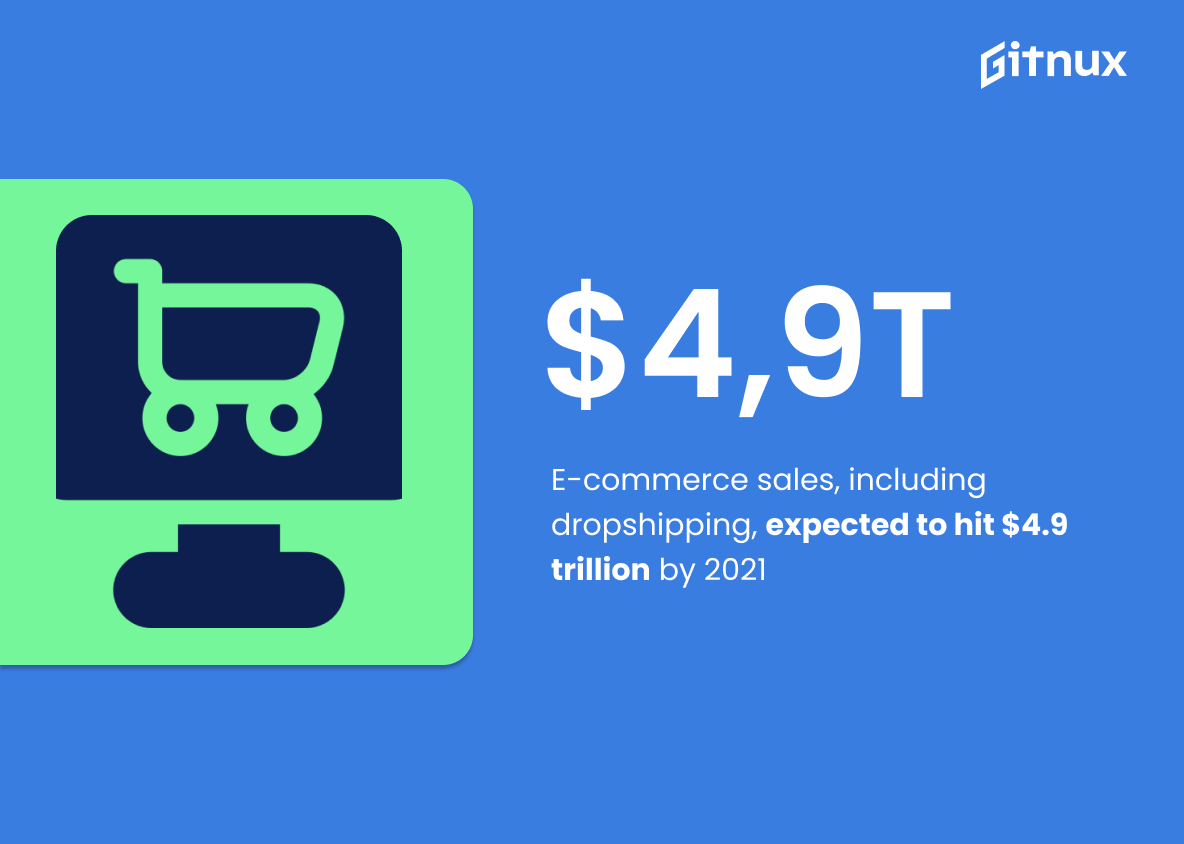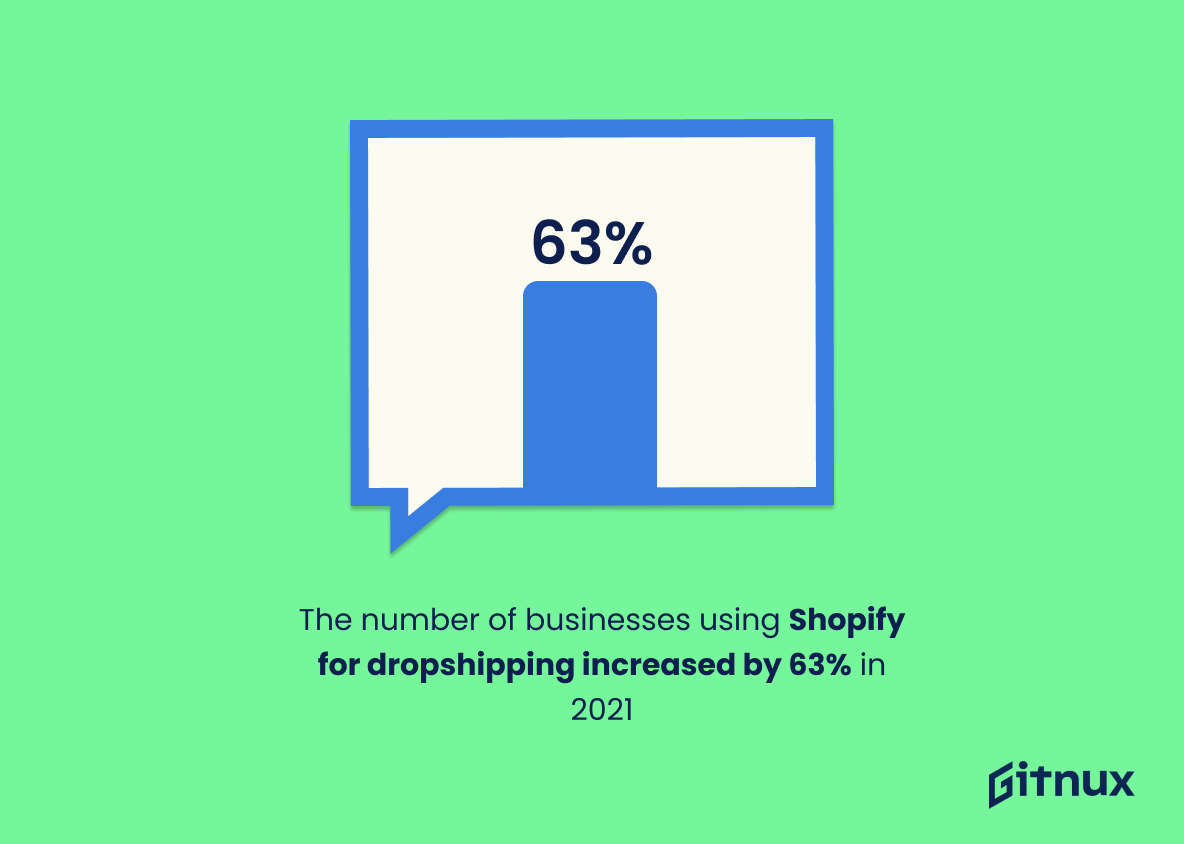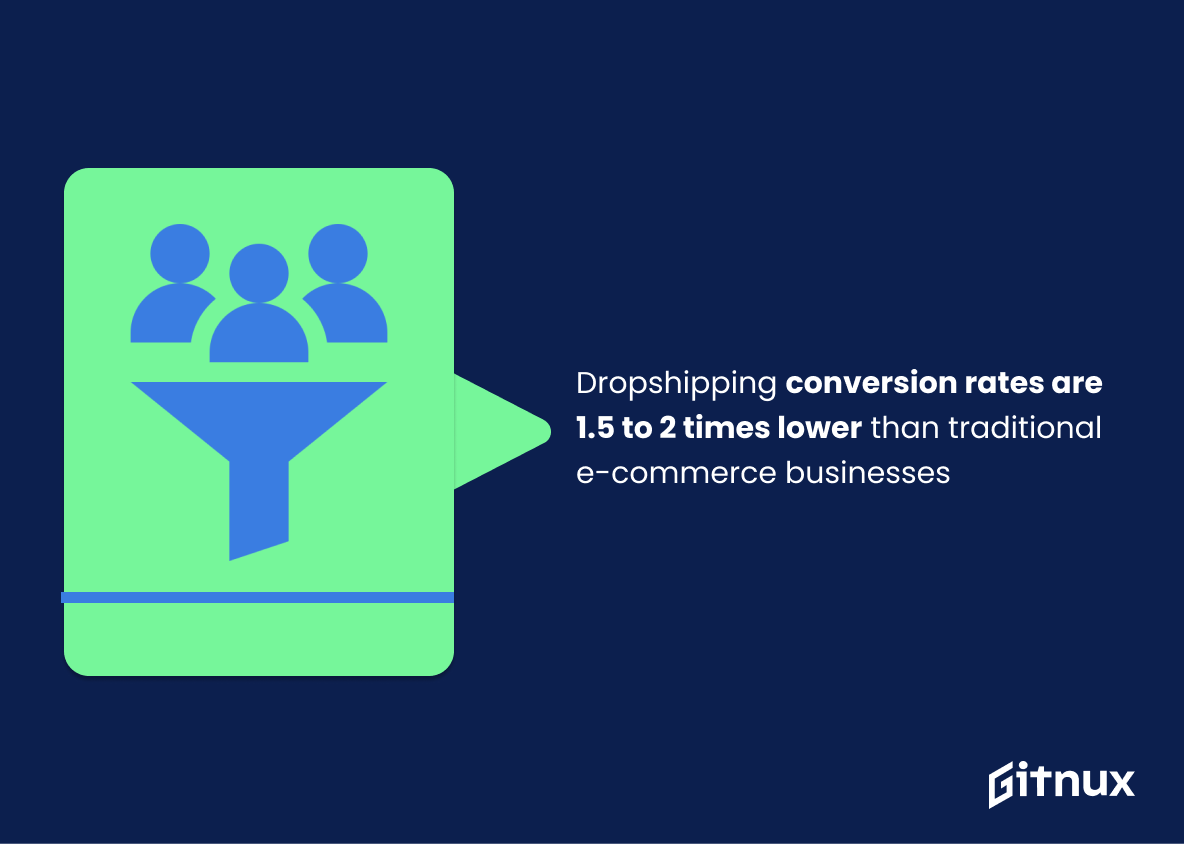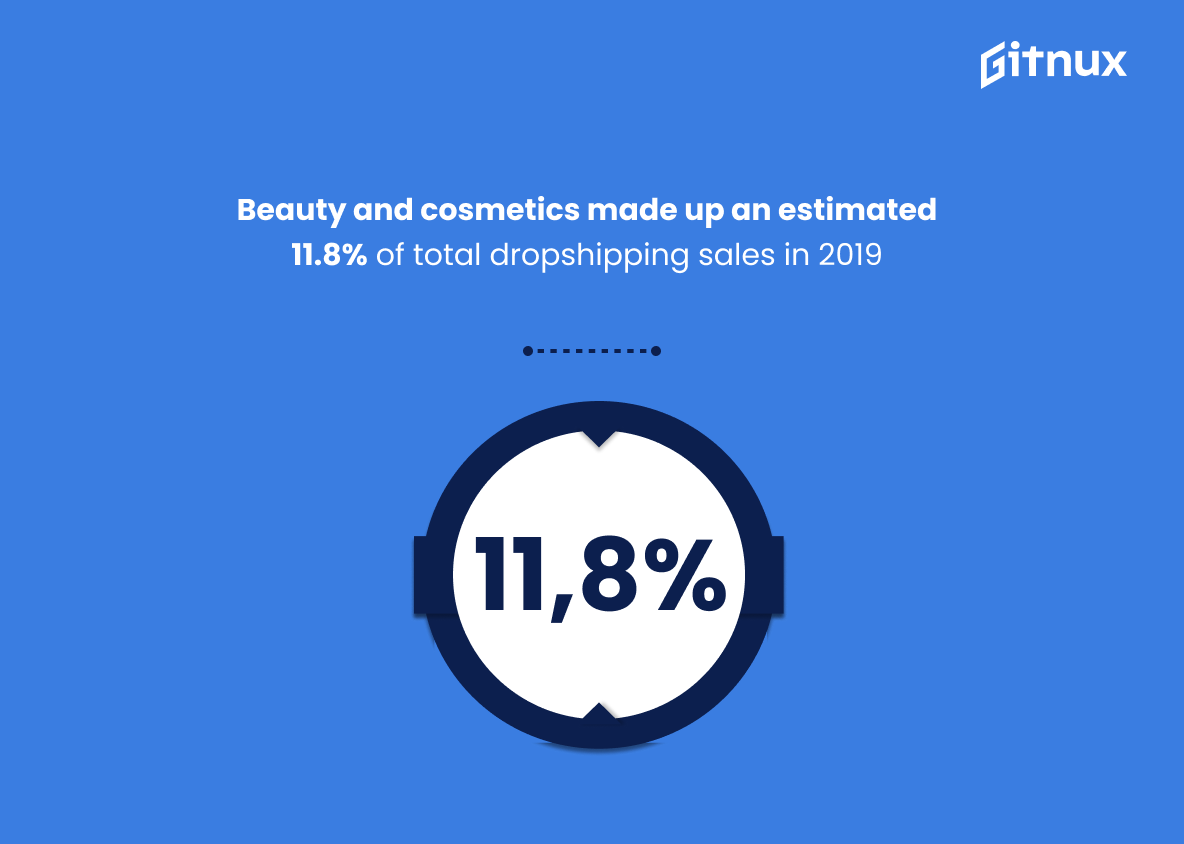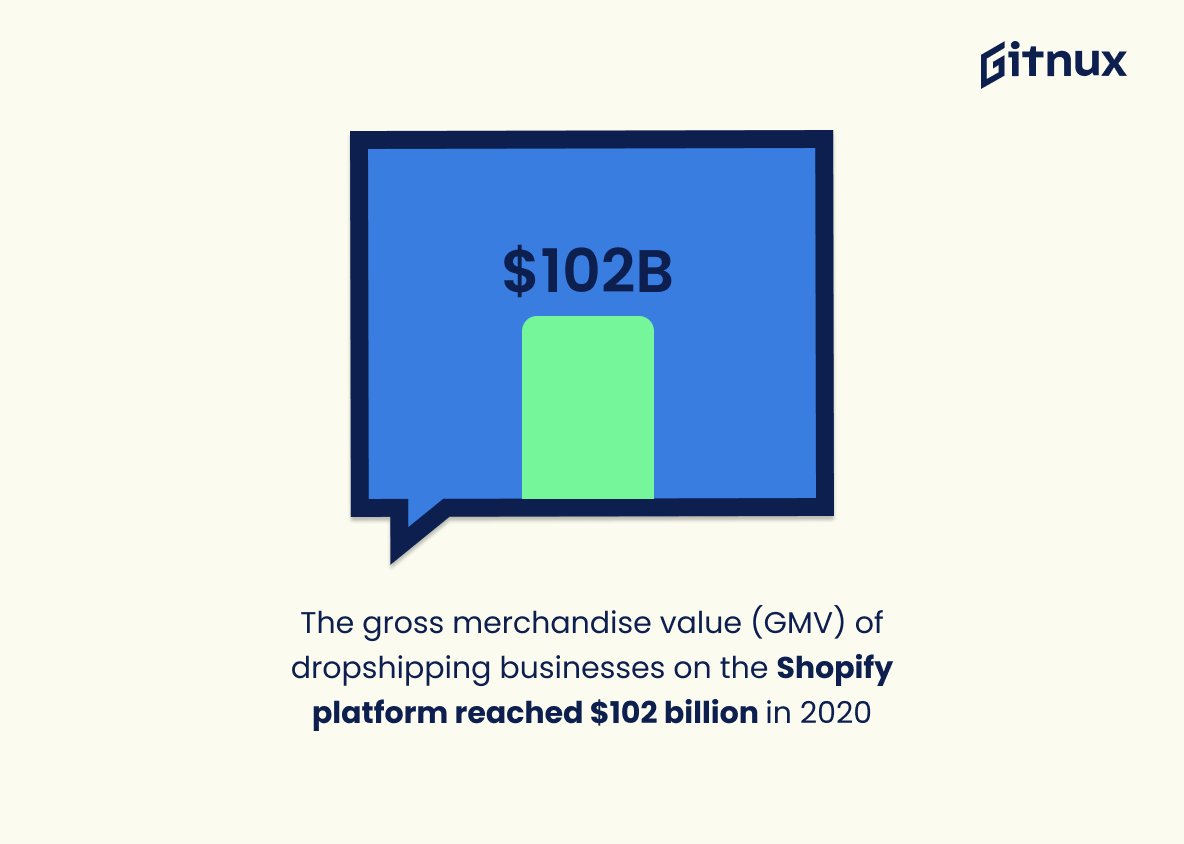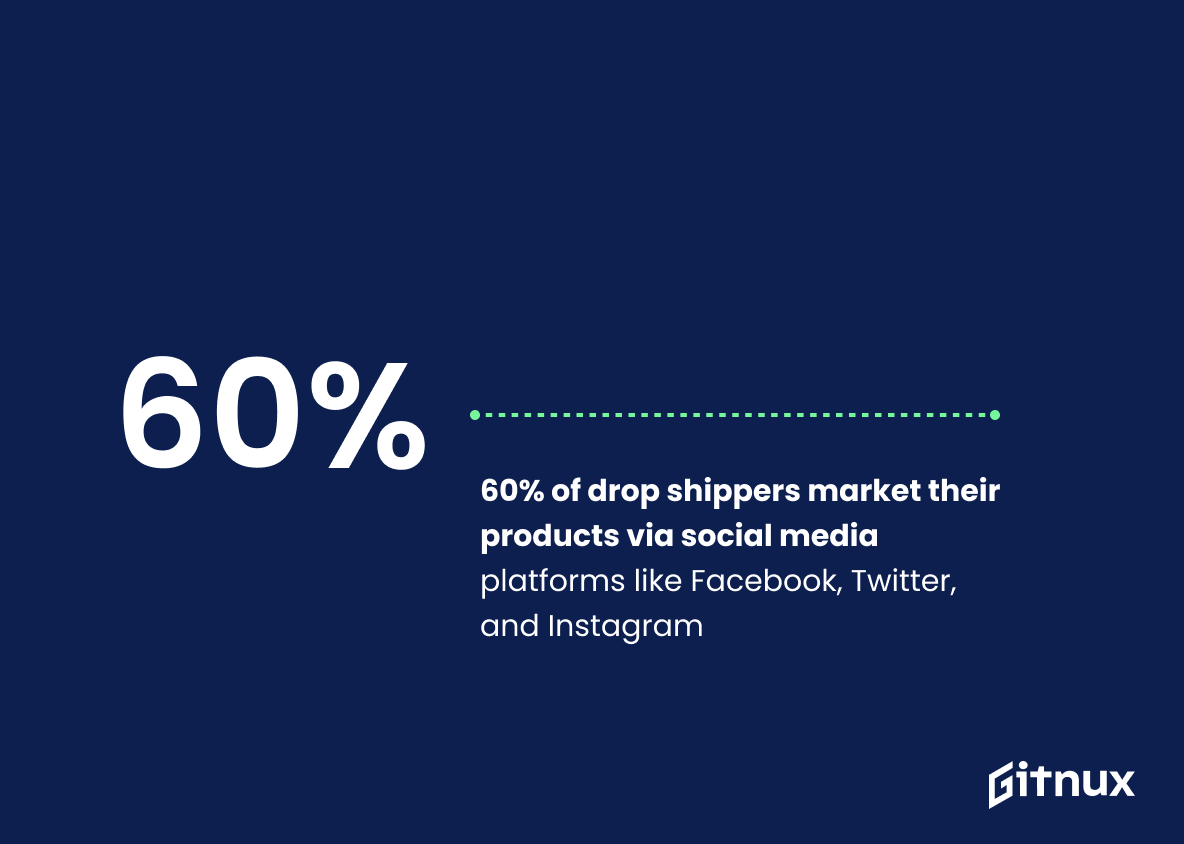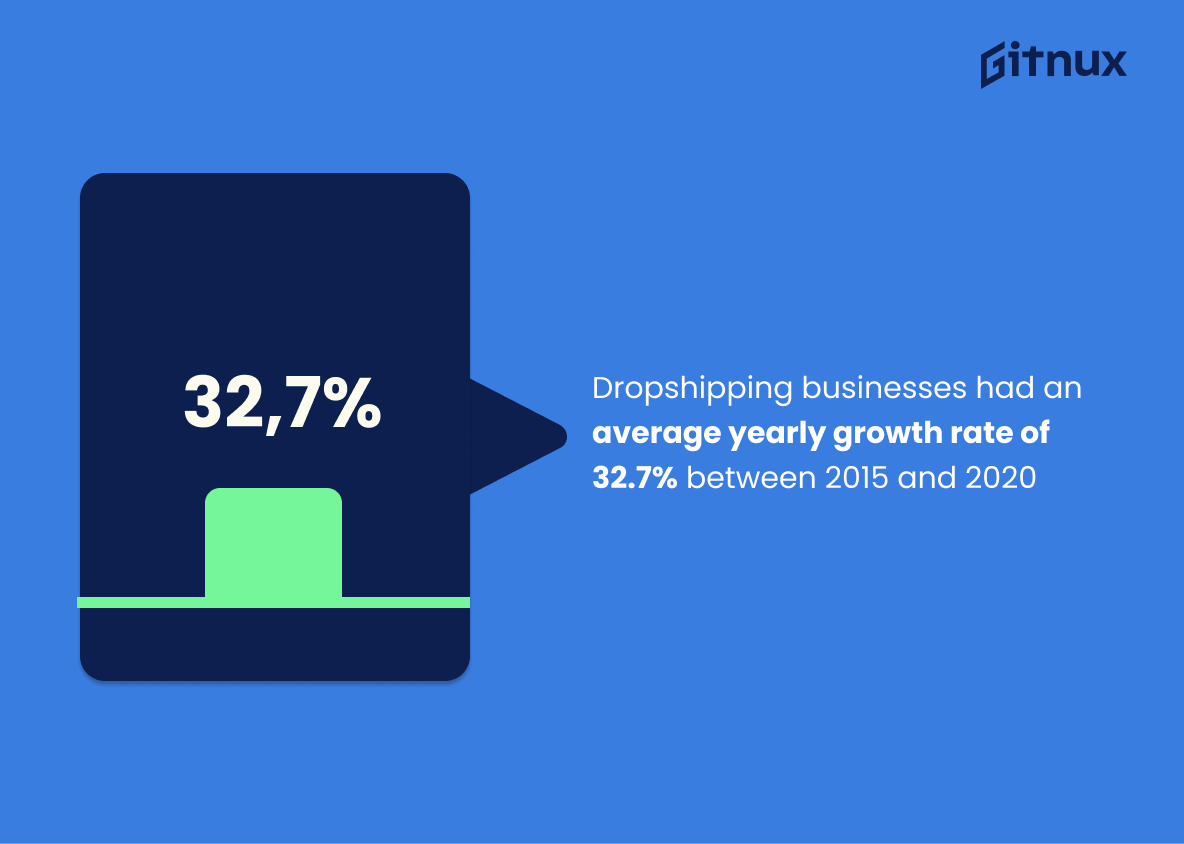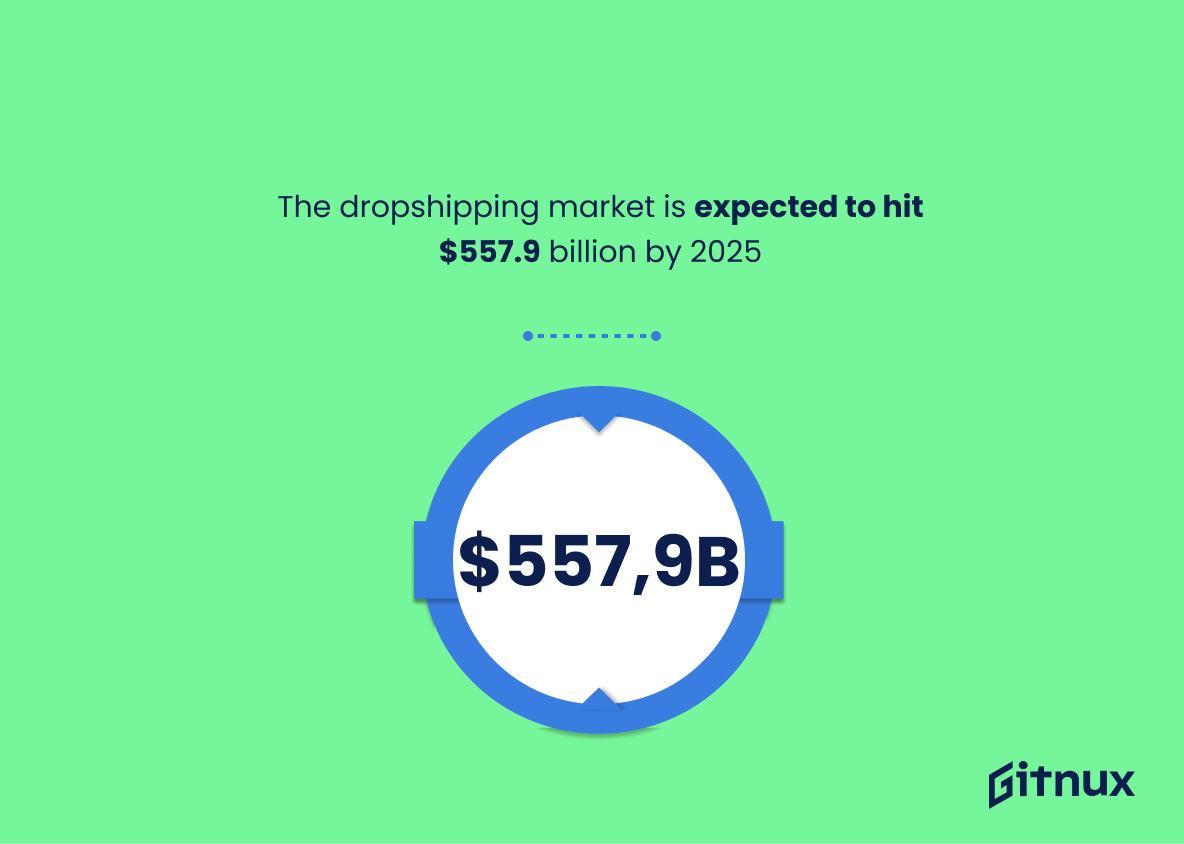Dropshipping is a popular e-commerce business model that has seen tremendous growth in recent years. According to research and statistics, dropshipping businesses generated over $85 billion in sales worldwide in 2021, with 25% of online retailers using it as their order fulfillment method. The United States was the top country for search interest in dropshipping followed by Canada and the United Kingdom. Amazon constituted around 34% of total U.S. e-commerce dropship sales while approximately 22-33% of internet retailers have adopted this method globally.
When it comes to profits, Dropshippers typically enjoy net profit margins between 15%-20%, which are lower than traditional retail margins (30%-50%). However, 84% of online sellers find establishing a dropshipping business as one of the most significant barriers when starting an online store due to logistical expenses associated with it such as inventory management or customer service support costs etc.. Clothing & apparel accounted for 31.3 %of all global drop shipping sales whereas beauty & cosmetics made up 11%. E-Commerce Sales are projected to reach 4 trillion dollars by 2021 where Drop Shipping will play a major role contributing significantly towards its success rate . Shopify’s revenue soared 110 percent last year indicating 63 percent increase on number businesses using shopify platform for drop shipping purposes . Lastly , according to market analysis ,the Global Dropship Market size is expected hit 557 Billion Dollars by 2025 making way more opportunities available within this sector .
This statistic is a testament to the immense success of Dropshipping businesses in 2021. It shows that Dropshipping is a viable and profitable business model, and that it is growing rapidly. This statistic is an important indicator of the potential of Dropshipping, and it should be included in any blog post about Dropshipping Statistics.
In 2021, 25% of online retailers were using dropshipping as their order fulfillment method.
This statistic is a testament to the growing popularity of dropshipping as an order fulfillment method among online retailers. It shows that a quarter of all online retailers have adopted this method, indicating that it is becoming increasingly accepted as a viable option for businesses. This is an important statistic to consider when discussing dropshipping statistics, as it provides insight into the current state of the industry.
Dropshipping Statistics Overview
The United States is the top country for search interest in dropshipping, followed by Canada and the United Kingdom.
This statistic is significant in the context of a blog post about Dropshipping Statistics as it provides insight into the countries that are most interested in dropshipping. It is a useful indicator of the potential market size for dropshipping businesses, and can help inform decisions about where to focus marketing efforts. Additionally, it can be used to compare the relative interest in dropshipping between countries, and to identify potential opportunities for growth.
Approximately 22-33% of internet retailers have adopted the dropshipping method.
This statistic is significant in the context of a blog post about Dropshipping Statistics because it provides a clear indication of the prevalence of the dropshipping method among internet retailers. It shows that a significant portion of online stores have adopted this method, which suggests that it is a viable option for businesses looking to expand their operations. Furthermore, it provides a benchmark for comparison, allowing readers to gauge the success of their own dropshipping efforts against the industry average.
Dropshipping net profit margins are between 15% and 20% on average, while traditional retail margins average 30% to 50%.
This statistic is a crucial indicator of the potential profitability of dropshipping compared to traditional retail. It shows that while dropshipping may require less upfront investment, it also yields lower profit margins. This is an important factor for entrepreneurs to consider when deciding which business model to pursue.
84% of online sellers find that establishing a dropshipping business is the most significant barrier to starting an online business.
This statistic is a telling indication of the difficulty of starting an online business through dropshipping. It highlights the fact that the majority of online sellers find the process of establishing a dropshipping business to be the most significant obstacle they face. This statistic is important to consider when discussing the challenges of starting an online business through dropshipping, and is a key factor to consider when looking at the overall dropshipping landscape.
Clothing and apparel accounted for 31.3% of dropshipping sales in 2019.
This statistic is a telling indication of the popularity of dropshipping in the clothing and apparel industry. It shows that a significant portion of dropshipping sales in 2019 were generated from this sector, indicating that it is a lucrative and viable option for businesses in this field.
E-commerce sales are projected to reach $4.9 trillion by 2021, with dropshipping having a significant stake in it.
This statistic is a testament to the potential of dropshipping as a business model. It shows that the e-commerce industry is growing rapidly and that dropshipping is playing a major role in this growth. This is an important point to make in a blog post about dropshipping statistics, as it demonstrates the potential of this business model and encourages readers to consider it as a viable option.
The number of businesses using Shopify for dropshipping increased by 63% in 2021.
This statistic is a testament to the growing popularity of Shopify for dropshipping. It shows that more and more businesses are turning to this platform to facilitate their dropshipping operations, indicating that it is a reliable and efficient way to do business. This is an important statistic to consider when discussing dropshipping trends and the overall success of the industry.
74% of retailers believe that dropshipping has considerably reduced their logistical expenses.
This statistic is a testament to the power of dropshipping in reducing logistical expenses for retailers. It shows that the majority of retailers have experienced a considerable decrease in their logistical costs, which is a major benefit of dropshipping. This statistic is an important indicator of the effectiveness of dropshipping and should be included in any discussion of dropshipping statistics.
Dropshipping conversion rates are 1.5 to 2 times lower than traditional e-commerce businesses.
This statistic is a crucial indicator of the effectiveness of Dropshipping as a business model. It highlights the fact that Dropshipping is not as profitable as traditional e-commerce businesses, and that businesses should be aware of this when considering whether to pursue Dropshipping as a business model. This statistic is an important piece of information for any blog post about Dropshipping Statistics, as it provides readers with a clear understanding of the potential profitability of Dropshipping.
Beauty and cosmetics made up an estimated 11.8% of total dropshipping sales in 2019.
This statistic is a telling indication of the importance of beauty and cosmetics in the dropshipping industry. It shows that a significant portion of total dropshipping sales in 2019 were generated from beauty and cosmetics, highlighting the potential of this sector for dropshippers. This statistic is an important piece of information for anyone looking to get into the dropshipping business, as it provides insight into the potential of this sector.
Over 56% of dropshipping retailers have smaller than 1% profit margins.
This statistic is a stark reminder of the challenges faced by dropshipping retailers. It highlights the fact that the majority of dropshipping retailers are struggling to make a profit, with only a tiny fraction of them achieving a healthy margin. This is an important point to consider when evaluating the potential of dropshipping as a business model.
The gross merchandise value (GMV) of dropshipping businesses on the Shopify platform reached $102 billion in 2020.
This statistic is a testament to the success of dropshipping businesses on the Shopify platform. It shows that dropshipping is a viable business model and that it can be incredibly profitable. This statistic is a great example of the potential of dropshipping and can be used to inspire and motivate entrepreneurs to pursue this business model.
60% of drop shippers market their products via social media platforms like Facebook, Twitter, and Instagram.
This statistic is a telling indication of the power of social media in the dropshipping industry. It shows that the majority of drop shippers are leveraging the reach of social media to market their products, demonstrating the importance of these platforms in the success of their businesses.
Dropshipping businesses had an average yearly growth rate of 32.7% between 2015 and 2020.
This statistic is a testament to the success of Dropshipping businesses over the past five years. With an average yearly growth rate of 32.7%, it’s clear that Dropshipping has become a viable and profitable business model for many entrepreneurs. This statistic is a great indicator of the potential of Dropshipping and should be a source of inspiration for those looking to start their own Dropshipping business.
The dropshipping market is expected to hit $557.9 billion by 2025.
This statistic is a testament to the immense potential of the dropshipping market. It shows that the industry is growing rapidly and is expected to reach a staggering $557.9 billion by 2025. This is a clear indication that dropshipping is a lucrative business opportunity that should not be overlooked.
Conclusion
Dropshipping is a rapidly growing industry, with businesses generating over $85 billion in sales in 2021 and 25% of online retailers using it as their order fulfillment method. The United States is the top country for search interest in dropshipping, followed by Canada and the United Kingdom. Amazon constitutes around 34% of total U.S. e-commerce dropship sales while approximately 22-33% of internet retailers have adopted this method globally. Dropshipping net profit margins are between 15%-20%, significantly lower than traditional retail margins which average 30%-50%.
The most significant barrier to starting an online business through dropshipping appears to be establishing one – 84% of sellers find this difficult – but clothing and apparel accounted for 31.3% of its sales in 2019, making it a lucrative option nonetheless. E-commerce sales are projected to reach $4.9 trillion by 2021 with Shopify’s revenue soaring 110%, indicating that there will be plenty more opportunities available soon enough; 74% believe that they have reduced logistical expenses too. Conversion rates may be 1½–2 times lower than those from traditional eCommerce stores but beauty & cosmetics made up 11·8 %of total drop shipping revenues last year so there’s still potential here too. China remains one of the top markets for sourcing products (83%) although 56 %have smaller than 1 %profit margin – something worth bearing in mind when considering entering into such ventures. Finally, GMV on Shopify reached $102 billion last year whilst yearly growth rate was 32·7%; overall market value is expected to hit 557·9 billion dollars by 2025 so now could well prove an opportune time indeed…
References
0. – https://www.businesswire.com
1. – https://www.supplychaindive.com
2. – https://www.statista.com
3. – https://www.socialmediatoday.com
4. – https://www.globenewswire.com
5. – https://www.oberlo.in
6. – https://www.opstart.ca
7. – https://www.marketwatch.com
8. – https://www.ecommerce-platforms.com
9. – https://www.bigcommerce.com
10. – https://www.oberlo.com
11. – https://www.perzonalization.com
12. – https://www.business.com
13. – https://www.sellerapp.com
14. – https://www.trends.google.com
15. – https://www.ecommerceceo.com


